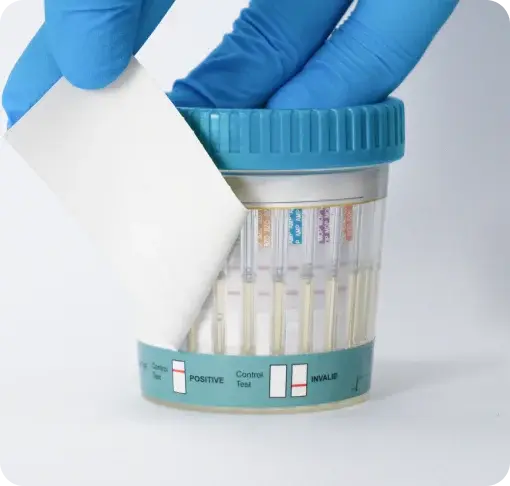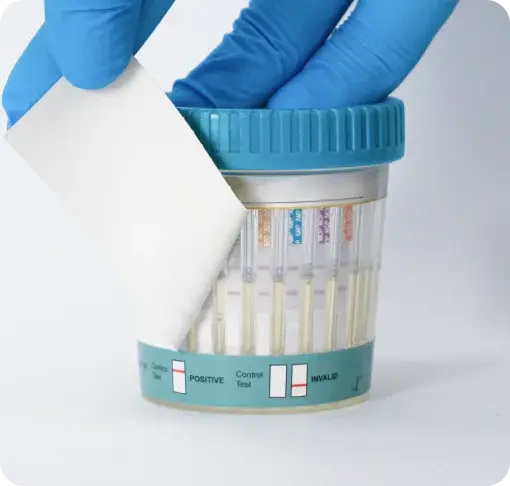A Complete Guide for Employers and Healthcare Providers
MDMA—commonly known as Ecstasy or Molly—is one of the most widely misused synthetic drugs, often associated with party culture and recreational use. But its presence in the workplace and healthcare settings is becoming increasingly concerning, especially as newer formulations emerge and testing protocols evolve.
In this guide, we break down how MDMA is detected, how long it stays in the system, what it shows up as on drug test reports, and what healthcare professionals and employers need to watch for when interpreting results.
What Is MDMA?
MDMA (3,4-methylenedioxymethamphetamine) is a synthetic stimulant with hallucinogenic properties. While it was originally developed for therapeutic purposes, it is now classified as a Class A controlled substance in the UK, with no approved medical use in most countries.
Street names for MDMA include:
- Ecstasy
- Molly
- E
- X
- Adam
- Love Drug
- Hug Drug
- Beans
Its effects include heightened sensory perception, increased emotional closeness, and intense euphoria—making it a popular choice in nightlife and festival environments. However, its misuse can lead to dehydration, hyperthermia, serotonin syndrome, and long-term neurological harm.
Will MDMA Show Up on a Drug Test?
Yes. MDMA will show up on most standard drug tests, including urine, saliva, hair, and nail. In drug test results, MDMA may be identified under its own name or may be grouped with amphetamine-type stimulants, depending on the test type and panel sensitivity. Most multi-panel drug screens—including 5-, 10-, 12-, 14-, and 16-panel tests—can detect MDMA, particularly those designed to screen for club drugs or synthetic stimulants.
How Long Does MDMA Stay in the System?
| Test Type | Detection Window |
| Urine | 1-5 Days |
| Saliva | 1-3 Days |
Can a False Positive for MDMA Happen?
Yes, though false positives for MDMA are uncommon, they can occur—especially in rapid point-of-care tests (POCTs). Some cold medications, antidepressants, or supplements may cause a cross-reaction.
That's why confirmation testing via GC-MS or LC-MS is strongly advised if a non-negative result is recorded.
What Does MDMA Look Like on a Drug Test Result?
In AttoSure drug test panels, MDMA is typically marked as MDMA or Ecstasy. Some 12- and 14-panel tests may use the broader category AMP (amphetamines) to include MDMA and related compounds.
If MDMA is detected, the result will be termed non-negative, even if the user is no longer feeling its effects. Employers and healthcare providers must follow up with confirmatory testing to verify accuracy and rule out sample mishandling or contamination.
In clinical settings, this result may trigger further medical evaluation or referral. In workplace environments, protocol usually involves suspending duties pending confirmation.
Why Employers and Healthcare Providers Test for MDMA
MDMA can significantly impair cognitive function, increase risk-taking behaviour, and affect cardiovascular health—posing serious risks in safety-sensitive roles or healthcare scenarios.
That's why MDMA testing is routinely included in:
- Workplace drug and alcohol policies
- Pre-employment and routine drug screening
- Return-to-duty or post-incident investigations
- Addiction and psychiatric treatment monitoring
- Legal and forensic testing
Industries such as construction, healthcare, transportation, education, and public services are especially vigilant about detecting MDMA use.
Final Thoughts
MDMA use in professional or healthcare settings can jeopardise safety, wellbeing, and regulatory compliance. Understanding how MDMA appears on different drug tests—and what to do with a non-negative result—is critical for employers and clinicians alike.
At AttoSure, we provide reliable, confidential, and rapid MDMA testing services. Whether you're an occupational health provider or a compliance manager, our lab-confirmed tests deliver accurate results with expert interpretation—helping you keep your team safe and informed.
You can also test your knowledge with our expert-designed quizzes tailored for workplace and healthcare settings. We pride ourselves on delivering first-class educational content, created by our team of scientific experts. Browse our selection of quizzes below.
Contact Us



